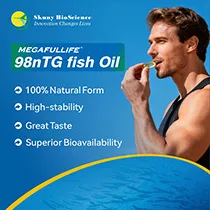Medically tailored meals could save US$32B annually in healthcare costs, experts flag

Researchers at the US Food is Medicine Institute predict that nationwide implementation of medically tailored meals could save around US$32.1 billion in healthcare costs across 49 states in the first year alone. Registered dietitians design these meals to meet the nutritional needs of people with complex health conditions.
According to the study, these meals could prevent over 3.5 million hospitalizations per year related to complications from diabetes, heart disease, and cancer.
The researchers used a simulation model to estimate state-specific one-year and five-year changes in hospitalizations, healthcare spending, and cost-effectiveness of medically tailored meals for patients with diet-related diseases and daily living limitations covered by Medicaid, Medicare, or private insurance.
Nutrition Insight discusses these meals’ financial and health benefits with Sue Daugherty, the CEO of medically tailored meal provider MANNA (Metropolitan Area Neighborhood Nutrition Alliance).
“Our clients are the sickest of the sick. They’re the 5% that’s costing the healthcare system 50% of the cost. Often, our clients are alone. We don’t have financial criteria, but many people we serve are food insecure and don’t have access to healthy food.”
According to Daugherty: “There’s plenty of data that shows you’re going to save the federal government significant dollars, and you’re going to have better health outcomes.”
She says there is a lot of momentum for the US Food is Medicine movement, which includes medically tailored meals, although the current administration is “presenting some challenges.”
“My ultimate hope and goal is that, someday, medically tailored meals will be a mandated covered expense. Just like you get prescribed your medication, if you get prescribed a diet, that should be accessible and covered for all — it’s a win-win.”
Prescription diet
After being discharged from the hospital, patients are commonly prescribed a diet, medications, and other therapies. However, Daugherty says these diets are often very complex for people to follow: “Not just ‘eat better,’ but ‘have a four-gram phosphorous, four-gram potassium, two-gram sodium, and 2000 cc fluid restricted diet.’ What are people supposed to do with that?”
She explains that MANNA is the “pharmacy for your prescription diet.” The company offers 12 different diet modifications, for example, serving clients who are newly diagnosed with cancer but also have diabetes or high blood pressure. “We provide the right nutrition to meet all their illnesses.”
“I battle constantly when advocating for policy change because people just can’t wrap their brains around the fact that when we talk about medically tailored meals, we’re not talking about food. We are talking about a treatment, a prescribed intervention.”
 We recently sat down with Daugherty to discuss MANNA’s 35-year experience in providing medically tailored meals.Daugherty says that the 2022 White House Conference on Hunger, Nutrition, and Health uplifted the Food is Medicine movement.
We recently sat down with Daugherty to discuss MANNA’s 35-year experience in providing medically tailored meals.Daugherty says that the 2022 White House Conference on Hunger, Nutrition, and Health uplifted the Food is Medicine movement.
“That was the tool that armed us to partner with primarily Medicaid providers across the country, where, for a small portion and a very tightly controlled population, they will treat a prescribed diet just like they would treat a prescribed medication — they’re reimbursing for that.”
State-by-state differences
Daugherty notes that MANNA was one of the first US organizations to publish research in 2013, showing that “not only do clients have better health outcomes, but they also significantly reduce healthcare costs.”
The new study in Healthy Affairs comes to similar conclusions. The model showed net health and cost benefits for medically tailored meal programs in all but one state. The highest annual per-patient savings were found for Connecticut (US$6,299), Pennsylvania (US$4,450), and Massachusetts (US$4,331). The meal program would be cost-neutral in Alabama but still yield health benefits.
The model also determined the number of patients who would need to receive medically tailored meals to prevent one hospitalization, ranging from 2.3 patients in Maryland to 6.9 patients in Colorado.
The authors estimate that over 14 million US citizens would qualify for receiving medically tailored meals. This figure covers people with diet-sensitive conditions like diabetes, cardiovascular diseases, or cancer and limitations in day-to-day activities, such as preparing meals or shopping.
The model calculated that, on average, annual healthcare spending amounts to US$30,900 per person who experiences 0.53 hospitalizations.
 MANNA offers prescription diets for people who are discharged from the hospital and are prescribed a complex diet.The researchers ran their population-based, open-cohort simulation model 1,000 times to account for uncertainties.
MANNA offers prescription diets for people who are discharged from the hospital and are prescribed a complex diet.The researchers ran their population-based, open-cohort simulation model 1,000 times to account for uncertainties.
“Our findings suggest that medically tailored meals are not just good medicine — they’re good economics,” says senior author Dariush Mozaffarian, director of the Food is Medicine Institute at the Friedman School, Tufts University. “States are excellent incubators for healthcare innovation. Investing in medically tailored meals could transform care for vulnerable patients in every state while creating substantial healthcare value.”
Healthy weight management
According to Daugherty, medically tailored meals can play a significant role in supporting people with healthy weight management when they take GLP-1 medications or when they stop taking these drugs.
She cautions that many people using these drugs are not changing their diet. “They’re still not eating healthily. Some data is coming out now with malnutrition associated with it because people aren’t eating well,” she adds. “They’re losing all this weight but losing muscle with that.”
“What’s going to happen while on the drug if you get sick and you’re malnourished because you’ve been losing weight but not doing it most healthily, and now you have to battle chemotherapy and radiation?”
Daugherty worries it is too easy for people to access these drugs. For example, when she was practicing as a dietitian, people who were considered for weight loss surgery needed to “see a dietitian, meet with a counselor, and demonstrate that diet failed.”
“It fascinates me that there’s no intervention. That’s being re-evaluated because of the cost and how it has exploded.”
 Daugherty says the Food is Medicine Coalition’s accreditation program helps scale medically tailored meal interventions.She stresses: “Medically tailored meals are a huge component in at least making sure that people learn how to eat a balanced diet. If that fails, then move to the medication. Or, when you come off it, ensure you’re still giving people a balanced diet.”
Daugherty says the Food is Medicine Coalition’s accreditation program helps scale medically tailored meal interventions.She stresses: “Medically tailored meals are a huge component in at least making sure that people learn how to eat a balanced diet. If that fails, then move to the medication. Or, when you come off it, ensure you’re still giving people a balanced diet.”
Scaling medically tailored meals
As more attention and funding for Food is Medicine programs is becoming available, Daugherty says there is more competition from for-profit entities claiming they’re offering medically tailored meals or Food is Medicine options but aren’t.
She cautions that there is no national standard (yet) that defines these interventions. “It can be concerning if people think they’re getting something they’re not.”
MANNA is an accredited member of the Food is Medicine Coalition, which launched the first accreditation program for medically tailored meals with criteria and standards ensuring the same level of service.
This organization also offers an accelerator program to help refine, replicate, and scale medically tailored meal interventions. It provides up to five nonprofits annually with a year-long training program on preparing and delivering high-quality meals to their communities.
Meanwhile, the MANNA Institute explores the impact of nutrition on health for people with serious illnesses.
“The data continues to show that people like the program — they have to want to eat the meals — but they have particular requests or needs that would differ across the country,” says Daughterty.
Through the institute and the accelerator program, she hopes to build more models like MANNA that are local to the communities these programs serve.












